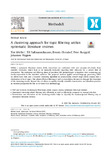Citation link:
http://dx.doi.org/10.25819/ubsi/9933| DC Field | Value | Language |
|---|---|---|
| crisitem.author.orcid | 0000-0001-9018-9959 | - |
| crisitem.author.orcid | 0000-0002-1061-8686 | - |
| crisitem.author.orcid | 0000-0001-7870-6044 | - |
| dc.contributor.author | Burggräf, Peter | - |
| dc.contributor.author | Weißer, Tim | - |
| dc.contributor.author | Saßmannshausen, Till Moritz | - |
| dc.contributor.author | Ohrndorf, Dennis | - |
| dc.contributor.author | Wagner, Johannes | - |
| dc.date.accessioned | 2021-06-16T15:07:49Z | - |
| dc.date.available | 2021-06-16T15:07:49Z | - |
| dc.date.issued | 2020 | de |
| dc.description | Finanziert aus dem Open-Access-Publikationsfonds der Universität Siegen für Zeitschriftenartikel | de |
| dc.description.abstract | Within a systematic literature review (SLR), researchers are confronted with vast amounts of articles from scientific databases, which have to be manually evaluated regarding their relevance for a certain field of observation. The evaluation and filtering phase of prevalent SLR methodologies is therefore time consuming and hardly expressible to the intended audience. The proposed method applies natural language processing (NLP) on article meta data and a k-means clustering algorithm to automatically convert large article corpora into a distribution of focal topics. This allows efficient filtering as well as objectifying the process through the discussion of the clustering results. Beyond that, it allows to quickly identify scientific communities and therefore provides an iterative perspective for the so far linear SLR methodology. • NLP and k-means clustering to filter large article corpora during systematic literature reviews. • Automated clustering allows filtering very efficiently as well as effectively compared to manual selection. • Presentation and discussion of the clustering results helps to objectify the nontransparent filtering step in systematic literature reviews. | en |
| dc.identifier.doi | http://dx.doi.org/10.25819/ubsi/9933 | - |
| dc.identifier.uri | https://dspace.ub.uni-siegen.de/handle/ubsi/1921 | - |
| dc.identifier.urn | urn:nbn:de:hbz:467-19213 | - |
| dc.language.iso | en | de |
| dc.source | MethodsX ; Volume 7, 100831. - https://doi.org/10.1016/j.mex.2020.100831 | de |
| dc.subject.ddc | 620 Ingenieurwissenschaften und zugeordnete Tätigkeiten | de |
| dc.subject.other | Systematische Literaturrecherche | de |
| dc.subject.other | Natürliche Sprachverarbeitung | de |
| dc.subject.other | Systematic literature review | en |
| dc.subject.other | Natural language processing | en |
| dc.subject.swb | Literaturrecherche [vorwiegend nach inhaltlichen Kriterien] | de |
| dc.subject.swb | Sprachverarbeitung [Verwendung des gesprochenen Wortes zur Dateneingabe und -ausgabe] | de |
| dc.title | A clustering approach for topic filtering within systematic literature reviews | en |
| dc.type | Article | de |
| item.fulltext | With Fulltext | - |
| ubsi.publication.affiliation | Fakultät IV - Naturwissenschaftlich-Technische Fakultät | de |
| ubsi.source.author | Elsevier | de |
| ubsi.source.doi | 10.1016/j.mex.2020.100831 | - |
| ubsi.source.issn | 2215-0161 | - |
| ubsi.source.issued | 2020 | de |
| ubsi.source.issuenumber | 7 | de |
| ubsi.source.link | https://www.elsevier.com/de-de | de |
| ubsi.source.pages | 10 | de |
| ubsi.source.place | Amsterdam | de |
| ubsi.source.publisher | Elsevier | de |
| ubsi.source.title | MethodsX | de |
| ubsi.source.volume | 2020 | de |
| ubsi.subject.ghbs | WAS | de |
| Appears in Collections: | Geförderte Open-Access-Publikationen | |
Files in This Item:
| File | Description | Size | Format | |
|---|---|---|---|---|
| A_clustering_approach_for_topic_filtering.pdf | 1.47 MB | Adobe PDF |  View/Open |
This item is protected by original copyright |
Page view(s)
527
checked on Nov 25, 2024
Download(s)
193
checked on Nov 25, 2024
Google ScholarTM
Check
Altmetric
Items in DSpace are protected by copyright, with all rights reserved, unless otherwise indicated.

